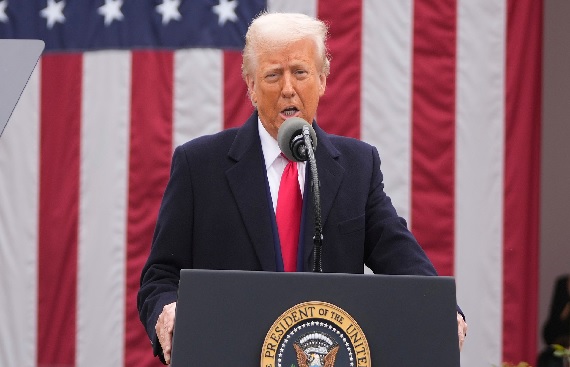Trump Doubles Tariffs on Indian Imports, Straining Bilateral Ties

- Trump doubles tariffs on Indian imports to 50%, targeting multiple industries
- Indian exporters, jobs, and markets hit, with rupee at 3-week low
- Failed trade talks deepen tensions, but reforms may strengthen India’s long-term outlook
U.S. President Donald Trump’s decision to double tariffs on imports from India raising duties to as high as 50% took effect Wednesday, dealing a heavy blow to trade and diplomatic relations between the two democracies.
The new measures add a 25% penalty linked to India’s Russian oil purchases on top of an existing 25% duty. This raises tariffs to among the highest globally, covering products such as garments, gems and jewellery, footwear, chemicals, furniture, and sporting goods.
The impact is expected to hurt thousands of small exporters and jobs in India, particularly in Prime Minister Narendra Modi’s home state of Gujarat, while slowing growth in one of the world’s fastest-expanding economies.
Also Read- US to Impose Additional 25% Tariffs on Indian Goods from August 27
Five rounds of negotiations between Washington and New Delhi failed to reach a compromise that would have reduced U.S. tariffs closer to 15%, in line with trade deals signed with Japan, South Korea, and the European Union. Officials cite miscalculations and missed signals on both sides.
India’s trade ministry has yet to respond officially, though government sources expressed hope that Washington will reconsider the move, while also preparing measures to cushion its economic impact.
Markets reflected unease Indian equities saw their steepest fall in three months on Tuesday after the U.S. confirmed the tariff hike. The rupee also extended its losing streak for a fifth straight session, closing at its lowest in three weeks.
Despite the setback, analysts say the disruption could push India to accelerate economic reforms and reduce protectionism, potentially strengthening its resilience long-term.
Certain goods including steel, aluminum, copper, passenger vehicles, and products covered under separate Section 232 tariffs remain exempt. A temporary three-week grace period also applies to Indian shipments already en route to the U.S. before the deadline.
Currently, India’s average tariff on U.S. imports stands at 7.5%, while Washington points to India’s steep duties on autos (up to 100%) and farm goods (average 39%).
